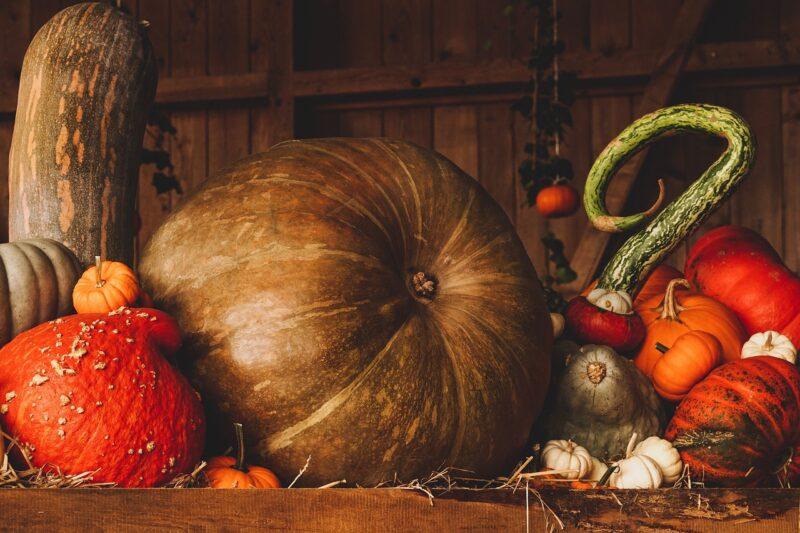The Celtic Tree Calendar is a twelve-month calendar divided into thirteen lunar divisions. Instead of following the waxing and waning lunar cycle, most modern Pagans adopt fixed dates for each “month.” If this were done, the calendar would ultimately go out of sync with the Gregorian year because some calendar years have 12 full moons and others have 13. The current tree calendar is based on the idea that letters in the old Celtic Ogham alphabet are related to different types of trees.
Although you are not required to pursue a Celtic path to celebrate the Celtic tree calendar months, you will notice that each of the themes in the Celtic tree months has a strong connection to Celtic culture and mythology.
It’s also important to note that there is no proof that early Celtic peoples were responsible for creating the Celtic tree calendar.

BETH (Birch Moon): December 24–January 20
The Birch Moon represents renewal and regeneration. As the solstice comes to an end, it is time to return to the light. Birch is the first tree to sprout back after a forest fire. Beth, pronounced beh, is the Celtic name for this month. This month’s work adds impetus and a little extra “oomph” to new pursuits. The Birch is also associated with creative and fertility magic, as well as healing and protection. To fend off negative energy, wrap a crimson ribbon around the trunk of a Birch tree. To safeguard a newborn from psychological harm, drape birch twigs over the cradle. To keep writings safe, use birch bark as magical parchment.

LUIS (Rowan Moon): January 21–February 17
Brighid, the Celtic goddess of hearth and home, is associated with the Rowan Moon. Brighid, who is celebrated on February 1st as Imbolc, is a fire goddess who protects mothers and families while also keeping an eye on the hearth fires. This is an excellent time of year for initiations (or, if you’re not part of a group, for self-dedication). The Rowan, known as Luis (pronounced loush) by the Celts, is associated with astral travel, personal power, and success. A charm fashioned from the sliver of a Rowan twig will keep the wearer safe. Rowan branches were reported to have been utilized as rune staves of protection by the Norsemen. Rowan is planted in graveyards in various countries to keep the dead from lingering too long.

NION (Ash Moon): February 18–March 17
Yggdrasil, the world tree, was an Ash in the Norse Eddas. The branch of this tree, also known by the Celtic name Nion (pronounced knee-un), was used to make Odin’s spear. This is one of three trees sacred to the Druids (the others being Ash, Oak, and Thorn), so this is an excellent month to practice inner-self magic. The Ash, which is associated with maritime rituals, magical potency, prophetic dreams, and spiritual travels, can be used to make magical (and mundane) instruments, which are thought to be more productive than tools fashioned from other wood. When Ashberries are placed in a cradle, they safeguard the child from being stolen away as a changeling by the nefarious Fae.

FEARN (Alder Moon): March 18 – April 14
Alder is growing on riverbanks around the time of the Spring Equinox, or Ostara, with roots in the water, linking that wonderful zone between heaven and earth. The Alder month, Fearn by the Celts and pronounced fairin, is a time for spiritual decisions, prophecy, divination magic, and connecting with your own intuition processes and skills. Alder blossoms and twigs are used as charms in faerie magic. Whistles were formerly manufactured from Alder shoots to summon Air spirits, so it’s an excellent wood for building a pipe or flute if you’re musical.

SAILLE (Willow Moon): April 15–May 12
The Celts called the Willow Moon Saille, pronounced Sahl-yeh. Willow thrives best when there is a lot of rain, which is abundant this time of year in northern Europe. For obvious reasons, this is a tree associated with healing and growth. A willow planted near your home will help ward off danger, especially in natural disasters like flooding or storms. They provide shelter and are sometimes found around cemeteries. Work on rituals involving healing, knowledge growth, nurturing, and women’s mysteries this month.

HUATH (Hawthorn Moon): May 13–June 9
The hawthorn is a thorny plant with lovely blooms. The Hawthorn month, also known as Huath by the ancient Celts and pronounced Hoh-uh, is a period of fertility, masculine vitality, and fire. This month, following Beltane, is a time when male potency is high. If you’re wanting to have a child, be busy this month! The hawthorn has a raw, phallic energy to it; utilize it for masculine power magic, commercial decisions, and forging professional connections. The Hawthorn is also associated with the land of Faerie, and it is thought to attract Faeries when it grows beside an Ash and an Oak.

DUIR (Oak Moon): June 10 – July 7
The Oak moon occurs at a time when the trees are nearing the end of their blooming cycle. The majestic Oak is strong, and robust, and towers above all of its neighbors. During the summer, the Oak King rules, and this tree was sacred to the Druids. This month was named Duir by the Celts, which some scholars believe means “door,” the origin word of “Druid.” The Oak is associated with protection and strength spells, fertility spells, money and success charms, and good fortune spells. When you go to an interview or a business meeting, keep an acorn in your pocket; it will bring you good luck. You’ll be healthy the next year if you catch a falling Oak leaf before it strikes the ground.

TINNE (Holly Moon): July 8 – August 4
Although the Oak controlled the previous month, the Holly will take over in July. This evergreen shrub reminds us all year of nature’s longevity. The Celts named the Holly moon Tinne, pronounced chihnn-uh, because they recognized the potent Holly was a symbol of masculine vigor and tenacity. The ancients employed Holly wood in the creation of weapons as well as in defensive magic. Hang a Holly sprig in your home to bring good luck and protection to your family. Wear it as a charm or create Holly one. Soak the leaves in spring water overnight under a full moon, then use the water as a blessing to sprinkle on people or around the house for protection and cleansing.

COLL (Hazel Moon): August 5 – September 1
The Celts referred to the Hazel Moon as Coll, which translates to “the life force within you.” This is the time of year when hazelnuts begin to appear on the trees, signaling the beginning of the harvest. Hazelnuts are also connected with protection and wisdom. In Celtic mythology, Hazel is frequently associated with hallowed wells and mystical springs bearing the fish of knowledge. This is an excellent month for workings involving wisdom and knowledge, dowsing and divination, and dream trips. If you’re a creative person, such as an artist, writer, or musician, this is a fantastic month to rekindle your muse and find new inspiration for your talents. Write a poem or song this month, even if you don’t usually do so.

MUIN (Vine Moon): September 2 – September 29
The month of the Vine is a season of enormous harvest – from the grapes of the Mediterranean to the fruits of the northern areas, the Vine yields fruits that can be used to make that marvelous concoction known as wine. Muin was the name given to this month by the Celts. The Vine is a symbol of both happiness and wrath – both are intense emotions. This month, do magical works related to the Autumn Equinox, or Mabon, and celebrate garden magic, joy and exhilaration, wrath and rage, and the darker side of the mother goddess. Use the Vines’ leaves to boost your own desire and ambitions. during the month of February, because there are equal hours of darkness and light during the month of Vine, it is also an ideal time to get in shape.

GORT (Ivy Moon): September 30 – October 27
The Ivy moon arrives near the end of the harvest season as the year comes to a close and Samhain approaches. Ivy frequently survives after its host plant dies, reminding us that life continues in the never-ending cycle of life, death, and rebirth. Gort, pronounced go-ert, was the name given to this month by the Celts. This is the time to let go of the negative in your life. Work on improving yourself and putting a barrier between you and the things that are toxic to you. Ivy can be utilized in spells for healing, protection, cooperation, and binding lovers together.

NEGETAL (Reed Moon): October 28 – November 23
Reed is commonly utilized to construct wind instruments, and its haunting sounds can be heard at this time of year when the souls of the deceased are beckoned to the Underworld. The Reed Moon was known as Negetal, pronounced nyettle by the Celts, and is also known as the Elm Moon by modern Pagans. This is an auspicious moment for divination and scrying. If you’re planning a seance, this is the month to conduct it. Do magical work connected to spirit guides, energy work, meditation, death celebration, and honoring the cycle of life and rebirth this month.

RUISH (Elder Moon): November 24 – December 23
The winter solstice has come and gone, and the Elder moon is a time of ends. Although the Elder is easily harmed, it rebounds swiftly and bursts back to life, symbolizing the approaching New Year. The Celts called the month of Elder Ruish (pronounced roo-esh) because it is a fantastic time for creative and rejuvenation activities. It is a period of new beginnings and endings, births and deaths, and renewal. Elder is also known to keep demons and other harmful creatures at bay. Use in Faerie and other natural spirits-related magic.




